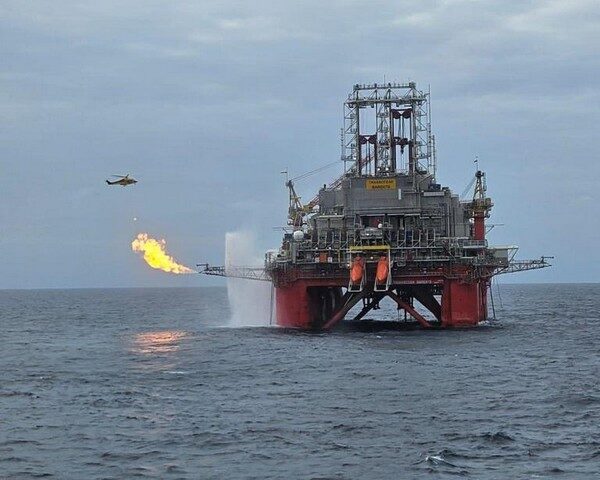.
Stalemate or struggle for regional hegemony?
By Dr Andrestinos N. Papadopoulos, Ambassador a.h.
Recent developments concerning the Syrian crisis have brought about some changes. After 26 months of diplomatic stalemate, Russia and the United States agreed to convene an international conference to try to stop Syria’s civil war, whereas David Cameron and Vladimir Putin decided in the Black Sea resort of Sochi to work towards a transitional government in Syria.
The conference will take place in Geneva, late June or early July, if eventually convened. Last year, during the talks in Geneva, Russia and the United States disagreed whether Assad must leave power. Now there is a change.
The United States accepted the participation in the conference of representatives of the Syrian government and Russia, and the participation of Saudi Arabia, a foe of both Damascus and Tehran and leading backer of the rebel forces. There is, however, a diplomatic conundrum. France opposes any meeting if Iran were invited, contrary to the Russian stand that it should be part of a solution. However, it is far from clear that Assad’s opponents can agree to meet the president’s representatives, as they are too divided on the issue of their own participation. What represents, however, a major obstacle to the plan for an international peace conference is the fact that according to U.S. assertions, Russia has delivered Yakhout anti-ship missiles to Syria. In this connection, President Putin’s spokesman said that Russia would honour contracts to supply arms to Syria. More serious, however, is Russia’s announcement that it would deliver an advanced S-300 air defence system to Damascus, despite U.S., French and Israeli objections. On the other hand, the European Union, at the meeting of the Foreign Ministers on July 27 could not agree on maintaining an arms embargo against Syria, leaving the possibility open to the U.K. and France to supply, as of August 1, arms to the rebels, believing that they might gain leverage over Assad and Russia.
These developments will undoubtedly prolong the civil war which left 80,000 dead and 1.5 mln refugees. More importantly, it will endanger the possibilities of even convening the international conference, let alone its successful outcome.
What has compelled Washington and Moscow to seek a diplomatic solution to the Syrian crisis are the reports of atrocities, the accusations that chemical weapons are being used, the rise of Al Qaeda-linked fighters among rebels, the escalation of war through the involvement of Hezbollah fighters and the possibility of a spill-over of the war beyond Syria’s borders. In other words, the lack of the possibility of a military solution. All these are not happening in a vacuum. There are factors affecting positively or negatively the two camps in Syria, whereas the conflict of interest of the countries of the region complicate even more the situation. It is of interest, therefore, to examine them.
On May 15, the UN General Assembly condemned Syrian President Al Assad’s forces and praised the opposition Syrian National Council, which opened its first embassy in Qatar in a diplomatic blow to President Al Assad and took Syria’s seat at the summit meeting of the Arab League in Doha. The UN-Arab League mediator, Lakhdar Brahimi, ruled out any role for President Assad in a transitional government, while the Organisation of Islamic Cooperation in August 2012 suspended Syria from the OIC. On the other hand, the divided opposition is untrustworthy and unprepared to govern.
Coming now to the conflict of interests, we observe the following: Turkey, because of her economic strength, the reduced U.S. influence in the Middle East after the “Arab Spring”, and her doubtful perspectives of EU membership, became the first contender for hegemony in the region. She relinquished Assad, counting that having shown solidarity with his Sunni enemies she will secure influence in Syria in the post-Assad era. Consequently, Turkey openly supports the Syrian opposition, supplies arms to the Free Syrian Army and accepts thousands of refugees on her territory. Egypt hosts the Syrian National Council in Cairo and President Mohhamed Morsi asked President Assad to relinquish power. He also proposed the creation of a quartet (Egypt, Turkey, Saudi Arabia and Iran) to solve the crisis. Saudi Arabia and Qatar are arming the rebels. Israel, no longer feeling that preserving stable relations with Assad is a high priority, decided to make two major air strikes in and near Damascus, for the known reasons, assuming that Assad sooner or later will be overthrown.
On the opposite side are the supporters of Syria: Russia, Iran and Hezbollah. Russia, the erstwhile ally and supplier of arms to Syria, has a naval base in Tartus, which allows it to have an important role in the affairs of the Middle East. Iran is using Syria, the only Arab state with which it entertains excellent relations, to strengthen the Shiite community in Lebanon, by sending arms and money to Hezbollah. Hezbollah’s involvement in the war, by the side of Assad, has repercussions in Lebanon, where the antagonism of pro-Syrians and anti-Syrians recently left several dead in Tripoli and threatens the delicate balance achieved after a long civil war between Christians, Sunnis and Shiites.
This is grosso modo the situation created by the Syrian crisis. The changes it brought about and the emerging antagonism between Shiites and Sunnis of the region moved the Arab-Israeli conflict to second place. The epicentre now is the struggle for regional hegemony between Iran on the one side and Egypt, Turkey and Saudi Arabia on the other. A fall of Assad will bring to power a variant of the Muslim Brotherhood and Israel will be surrounded by hostile Sunni powers. Iran will suffer a major defeat, as the Shiite axis Iran-Iraq-Syria-Lebanon will lose a link, thus weakening Hezbollah’s strength in Lebanon. The war developments that are unfolding will certainly oblige us to follow them closely in the months to come.







